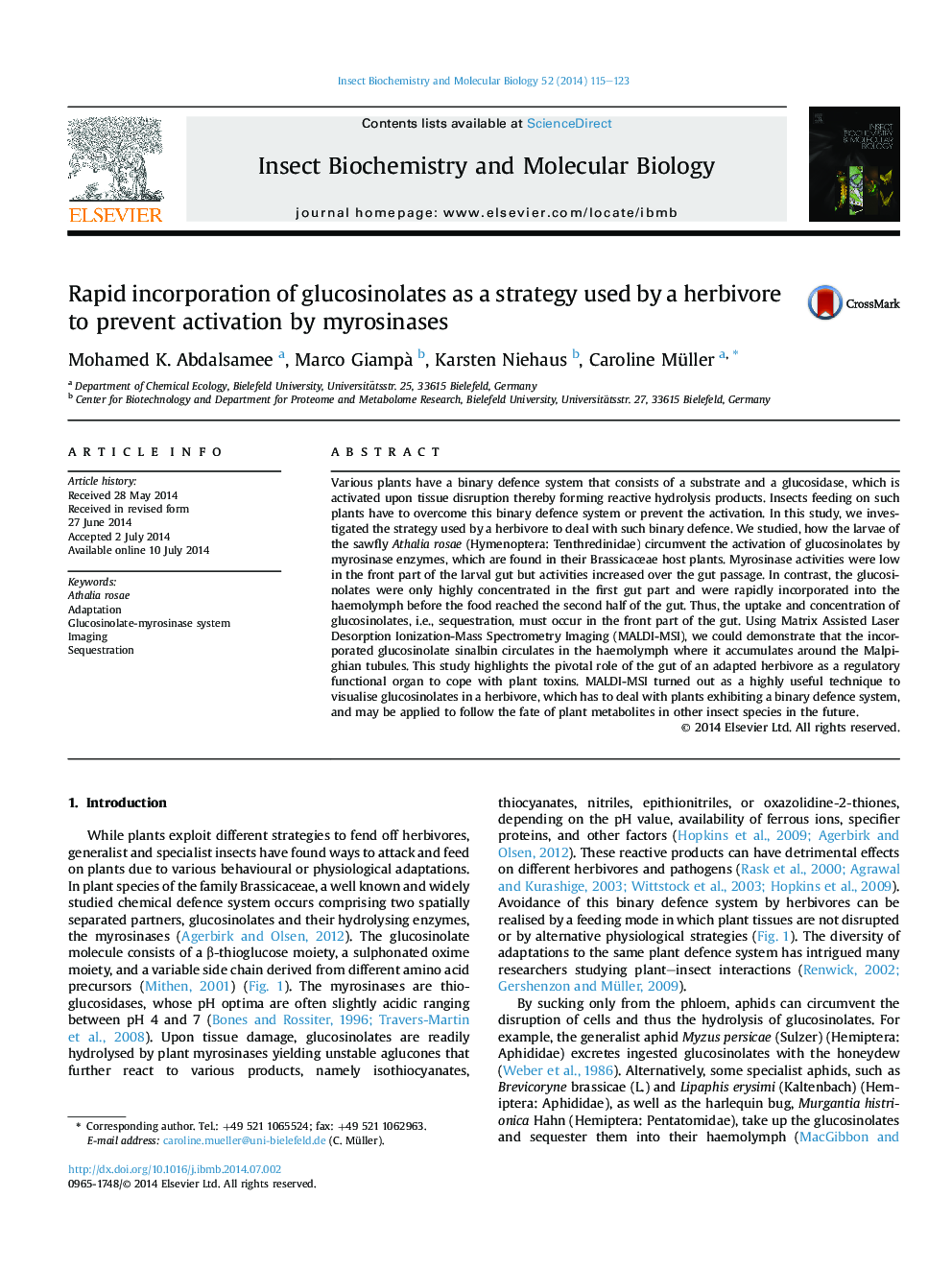| Article ID | Journal | Published Year | Pages | File Type |
|---|---|---|---|---|
| 1982095 | Insect Biochemistry and Molecular Biology | 2014 | 9 Pages |
•Sawfly larvae of Athalia rosae sequester intact glucosinolates into the haemolymph.•We examine how larvae can circumvent the activation of glucosinolates by myrosinases.•Myrosinase activity is low in the front gut part but increases during gut passage.•Glucosinolates are rapidly transported from the front gut part into the haemolymph.•MALDI-Imaging reveals the distribution of a glucosinolate in larvae.
Various plants have a binary defence system that consists of a substrate and a glucosidase, which is activated upon tissue disruption thereby forming reactive hydrolysis products. Insects feeding on such plants have to overcome this binary defence system or prevent the activation. In this study, we investigated the strategy used by a herbivore to deal with such binary defence. We studied, how the larvae of the sawfly Athalia rosae (Hymenoptera: Tenthredinidae) circumvent the activation of glucosinolates by myrosinase enzymes, which are found in their Brassicaceae host plants. Myrosinase activities were low in the front part of the larval gut but activities increased over the gut passage. In contrast, the glucosinolates were only highly concentrated in the first gut part and were rapidly incorporated into the haemolymph before the food reached the second half of the gut. Thus, the uptake and concentration of glucosinolates, i.e., sequestration, must occur in the front part of the gut. Using Matrix Assisted Laser Desorption Ionization-Mass Spectrometry Imaging (MALDI-MSI), we could demonstrate that the incorporated glucosinolate sinalbin circulates in the haemolymph where it accumulates around the Malpighian tubules. This study highlights the pivotal role of the gut of an adapted herbivore as a regulatory functional organ to cope with plant toxins. MALDI-MSI turned out as a highly useful technique to visualise glucosinolates in a herbivore, which has to deal with plants exhibiting a binary defence system, and may be applied to follow the fate of plant metabolites in other insect species in the future.
Graphical abstractFigure optionsDownload full-size imageDownload high-quality image (297 K)Download as PowerPoint slide
